Quick heads-up: some of the links on this page are affiliate links. If you make a purchase through them, we may earn a small commission (at no extra cost to you). This small bit of income helps keep our site running.
Best Hiking Sandals of 2025
This post was last updated on May 15, 2024.

A good pair of hiking sandals is great for any warm weather adventures, especially when you're going to be around the water. Whether you plan to do some actual hiking in your sandals or use them as camp shoes on a backpacking trip, they come in handy.
Being based on the ocean in the Pacific Northwest, we've had ample opportunity to test out hiking sandals. We've hiked plenty of beaches and creek crossings in sandals, and hauled them along as camp shoes on multi-day beach backpacking trips. The sandals below are the ones that survived and that we think are worth buying.
Our Top Recommendations
Our Top Pick
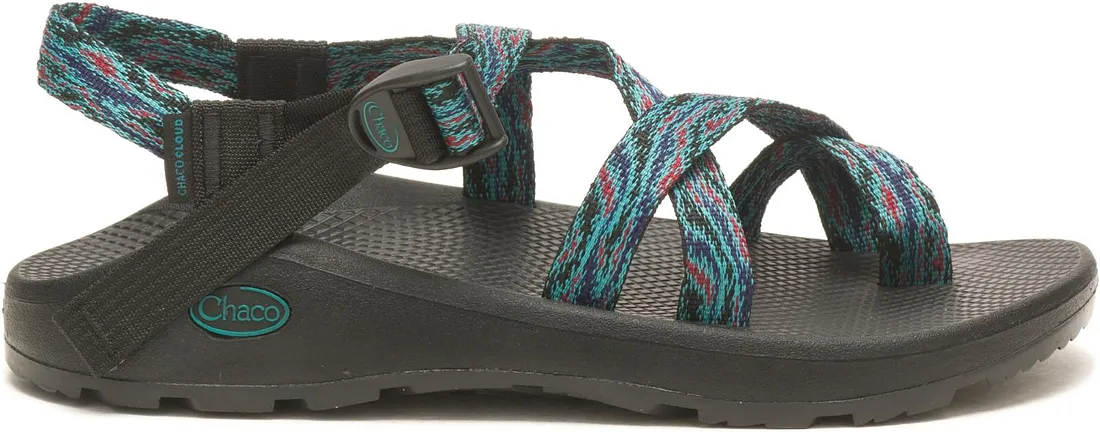
Chaco Z/Cloud 2
Adjustability
Comfort
Traction
Weight
| Adjustability |
9
|
| Comfort |
8
|
| Traction |
8
|
| Weight |
7
|
The Chaco Z/Cloud 2 hiking sandals snag the top spot due to their superior comfortable, cloud-like cushioning and reliable grip, as praised by numerous hikers in their glowing reviews.
Runner Up #1
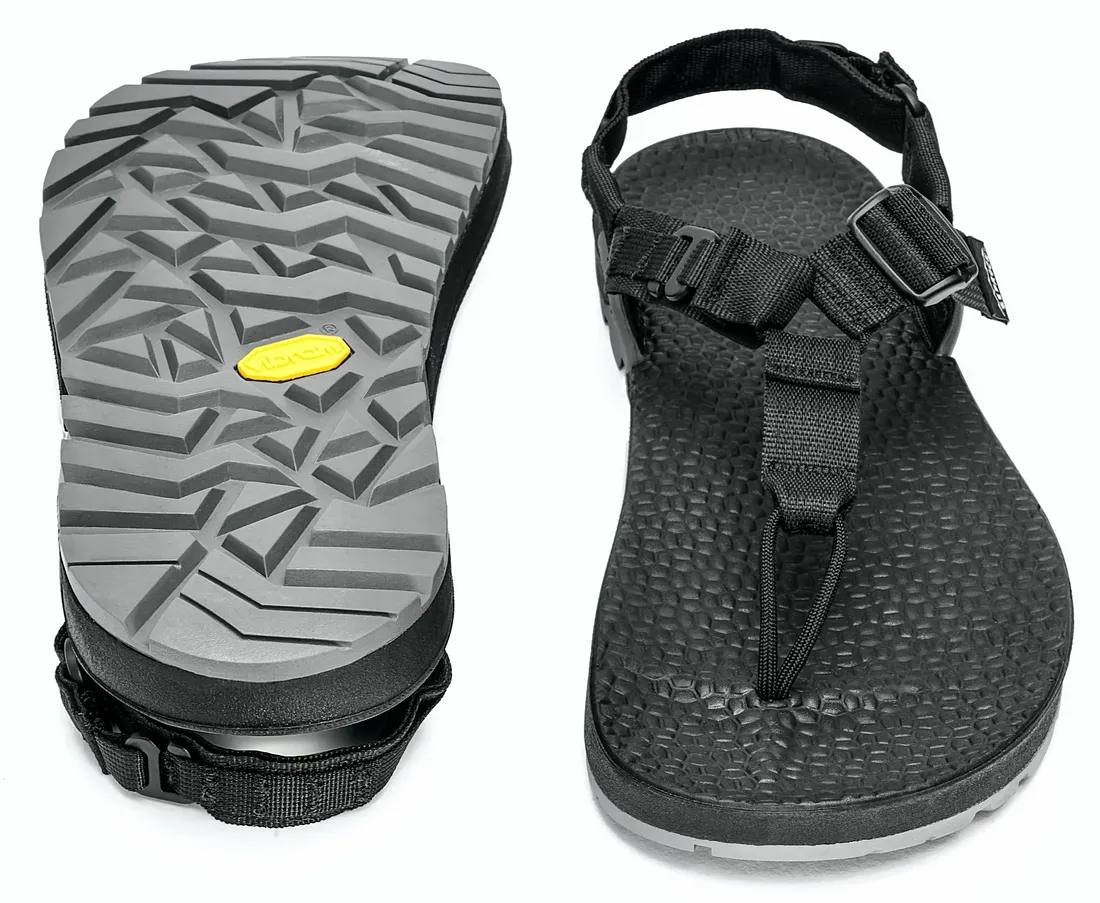
Bedrock Cairn 3D PRO II Adventure
Adjustability
Comfort
Traction
Weight
| Adjustability |
8
|
| Comfort |
8
|
| Traction |
9
|
| Weight |
7
|
The Bedrock Cairn Adventure secures top spot as runner up thanks to its extremely durable sole, which users praise for its sturdy grip, and the versatile strap system that many reviewers love for the personalized fit and comfort it offers.
Runner Up #2
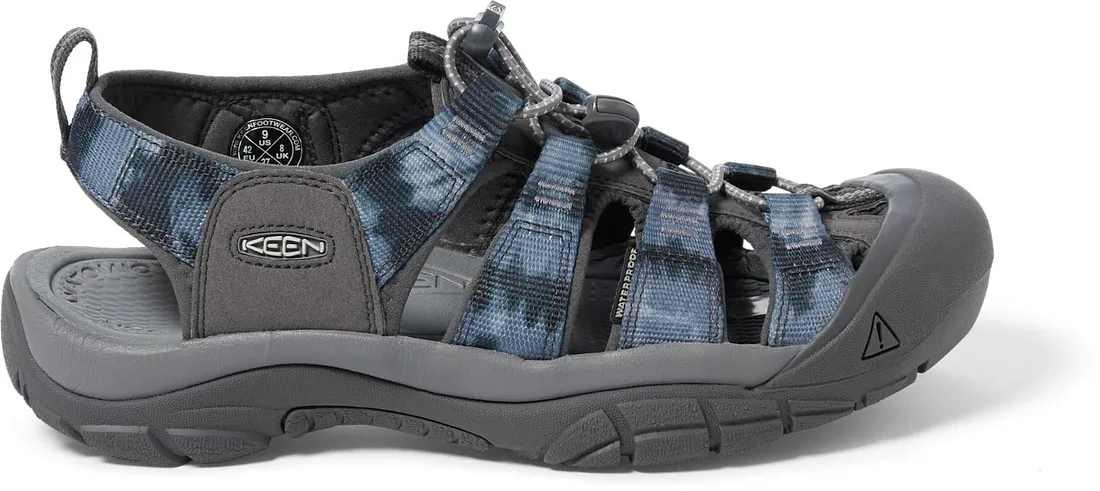
KEEN Newport H2
Adjustability
Comfort
Traction
Weight
| Adjustability |
8
|
| Comfort |
8
|
| Traction |
9
|
| Weight |
7
|
The KEEN Newport H2 snagged our top pick runner up spot because many outdoorsmen rave about its unmatched comfort even on long hikes and its exceptional durability that withstands rocky terrains, truly setting it apart from rival hiking sandals.
What you should look for
(and what we test for)
Comfort
Comfort is king when hunting for the perfect hiking sandal, so features like contoured footbeds, cushioned heel cups and adjustable straps should be high on your checklist.
Traction
To confidently tackle varied terrains - from slippery rocks to muddy trails, your hiking sandals should have solid grip and traction, so look out for durable rubber outsoles with deep lugs.
Durability
For a hiking sandal to survive rigorous outdoor adventures, ensure that it is made of tough, high-quality materials that can withstand the elements and frequent wear and tear.
Adaptability
Given the unpredictable nature of outdoor activities like camping and climbing, opt for versatile hiking sandals that offer quick-drying properties and adjustable fit to easily adapt to changing conditions and activities.
Chaco Z/Cloud 2
$104.95The Best Hiking Sandals
Based on our research and testing, we think the Chaco Z/Cloud 2 are the best Hiking Sandals on the market right now, for anyone looking to play hard outside.

| Adjustability |
9
|
| Comfort |
8
|
| Traction |
8
|
| Weight |
7
|
Reasons to Buy
- Superb comfort for long hikes
- Good foot support
- Outstanding traction
- Durable enough for rough terrains
Reasons to Avoid
- Takes some time to adjust perfectly
- A bit pricey compared to alternatives
The Chaco Z/Cloud 2 hiking sandals are a standout pick when it comes to men's hiking footwear. The combination of high-end materials and the robust design makes these sandals stand out amongst their competition. One of the biggest draws to the Chaco Z/Cloud 2 is the comfort they offer. The cushiony footbed and adjustable straps make it a dream to wear for hours on end.
Another shining point of these sandals is their durability. From rugged mountain trails to river crossings, these sandals seem to hold their own. Chaco's reputation for durability is reflected in these sandals, with many users noting that they last for years, even with heavy use.
As for the grip, the Chaco Z/Cloud 2 boasts solid traction on various terrains; slippery rocks, loose gravel, or muddy trails were no match for these bad boys according to a majority of users. The solidity of the grip can be attributed to the non-marking ChacoGrip rubber outsole they feature.
Aesthetics are usually not the top priority when it comes to hiking gear, but the Z/Cloud 2 manages to combine function with style. There's an array of colours and patterns to choose from, so there's something to suit everyone’s taste.
But despite all these great features, the Chaco Z/Cloud 2 sandals have a few drawbacks. Some online reviewers commented on their weighty feel, saying it took a while to get used to. A few reported taking a while to break them in and experiencing blisters during this process. Also, these sandals, while adjustable, don't come in half sizes and fit somewhat wide, presenting a possible issue for hikers with narrow feet.
Overall, the customer feedback for the Chaco Z/Cloud 2 has been overwhelmingly positive. The combination of their comfort, durability, grippy soles, and stylish design seem to have won over many hiking enthusiasts.
Prices
Bedrock Cairn 3D PRO II Adventure
$140.00Runner Up
Based on our research and testing, we think the Bedrock Cairn 3D PRO II Adventure are a great choice if you're looking for hiking sandals to go play hard outside with, if our top pick isn't quite what you're looking for.

| Adjustability |
8
|
| Comfort |
8
|
| Traction |
9
|
| Weight |
7
|
Reasons to Buy
- Outstanding traction
- Superior foot comfort
- Excellent durability
- Flexible material
- Great adjustability and fit
Reasons to Avoid
- May take some time to get used to
- On the pricey side
The Bedrock Cairn Adventure lives up to its name, serving as a dependable companion on any adventure. With its sturdy construction and versatile use, it truly earns a spot as one of the best hiking sandals for men.
These sandals are designed with durability in mind. They sport a patented design with three adjustment zones that provide a customized fit for any foot. The soles are thick and rugged, perfect for gripping uneven terrains, while the webbing is solidly constructed to endure all sorts of outdoor elements.
One outstanding feature is its Cairn Vibram® sole. This rugged rubber wonder consistently delivers excellent traction, whether you're navigating slick rocks or dusty trails. Its versatility is impressive, functioning equally well for water-based activities.
Despite its rugged design, the Cairn Adventure doesn't skimp on comfort. The sandals have an anatomically molded footbed, ensuring that your foot will retain a natural position. This not only enhances comfort but aids in reducing fatigue on long hikes.
The simplicity of putting them on and taking them off is a noteworthy point. The sandals' easy-to-adjust straps allow for quick changes, from trail to water and back again.
One potential downside is in the styling department. The utilitarian design might not appeal to everyone, though this is overshadowed by its impressive functionality.
Another minor issue noted by a few customers is the breaking-in period. Some users have reported blisters during the first few uses, which is typical of most hiking footwear.
User feedback overall has been very positive. Many comments commend its impressive durability and excellent traction. The comfort has been praised, especially for extended wear on challenging terrains.
In summary, the Bedrock Cairn Adventure is an excellent hiking sandal for men seeking reliability, durability, and a pretty good level of comfort.
No prices found. Check back later!
KEEN Newport H2
$125.00Runner Up
Based on our research and testing, we think the KEEN Newport H2 are a great choice if you're looking for hiking sandals to go play hard outside with, if our top pick isn't quite what you're looking for.

| Adjustability |
8
|
| Comfort |
8
|
| Traction |
9
|
| Weight |
7
|
Reasons to Buy
- Great traction
- Very comfortable
- Good foot protection
- Durable and built-to-last
- Adjustable fit
Reasons to Avoid
- Potential for foot odor building up with heavy use
- Long drying period post submersion
The KEEN Newport H2 is a well-known name among outdoor enthusiasts. It's often hailed as a reliable choice for anyone looking for a versatile and high-performance hiking sandal.
Built with a water-resistant, polyester webbing upper, the KEEN Newport H2 promises exceptional durability. This is a key feature that many buyers appreciate, as it allows the shoes to withstand different forms of wear and tear that are often associated with rigorous outdoor activities.
Another thing that users often mention in their reviews is the quick-dry lining. After a splash through a creek or a quick rain shower, these sandals dry out relatively quickly, adding to the overall comfort.
Speaking of comfort, many reviewers sing praises for the EVA midsole and the metatomical footbed. These features are designed to provide excellent arch support and cradle the natural contours of the foot, which, according to several user reviews, they do impressively well. Hikers found their strides comfortable and feet well-supported even after long hours on the trail.
The Newport H2 also impressed with its sturdy, non-marking rubber outsole. Buyers find the traction exceptionally good, even on slippery and uneven terrain.
One common criticism, though, is about its sizing. Some users found the shoes to be a tad smaller and suggest going a half size up for a more comfortable fit. These sandals also don’t come in wide sizes, making them less appealing to those with wider feet.
Lastly, the Newport H2 comes with a patented toe protection, the KEEN.Protect technology, which a lot of buyers appreciate. It's designed to keep your toes safe from unexpected bumps and scrapes.
In terms of style, many users love its sporty yet stylish design that fits well from trail to tavern.
Prices
Teva Katavi 2
$70.00Best Budget Hiking Sandals
Based on our research and testing, we think the Teva Katavi 2 are a great pick if you're looking for hiking sandals that are more budget friendly, without sacrificing too much in quality.
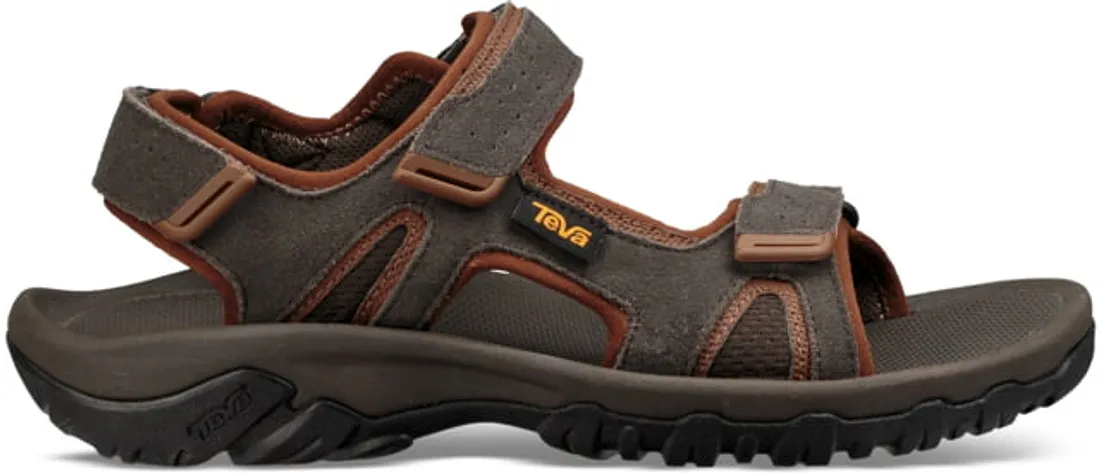
| Adjustability |
7
|
| Comfort |
8
|
| Traction |
9
|
| Weight |
7
|
Reasons to Buy
- Very good traction
- Comfortable for long trail days
- Adjustable straps for ideal fit
- Long lifespan and durable material
- Great value for money
Reasons to Avoid
- Might feel a little heavy
- Not the best for water crossing
- Can get a bit sweaty in hot weather
- Aesthetic appeal is subjective
The Teva Katavi 2 sandals have been one of the standout products in the budget niche for hiking gear. The overall design is sturdy and well-built, focusing on utilitarianism as opposed to flashy style. It boasts an impressive footprint in terms of durability and comfort.
At first glance, the robust suede upper and rubber outsole give off a sense of ruggedness, yet none of the comfort is compromised. Upon closer inspection, users have appreciated the nylon shank in the sole which provides support and stability on uneven terrains.
The one main feature of Teva Katavi 2 that has earned a lot of praise is its contoured EVA footbed. This is designed to support your arch and cradle the foot, proving to be a significant boost in comfort over prolonged usage. This is well noted by hikers, especially on far-reaching trails where comfort is key.
Buyers have also found the adjustable straps user-friendly, allowing them to personalize the fit according to their foot type. This doesn't always hold true with every sandal out there, making Teva Katavi 2 undoubtedly user-centered.
On the downside, the big toe strap is immovable and some users with wider feet have found it to be a bit of a stretch at times. But this concern was only limited to a small minority of the users.
Another noteworthy feature that is often mentioned in online reviews is the Katavi 2’s nice grip, thanks to the Durabrasion Rubber outsold, that can handle pretty much any terrain. From loose gravel to wet, slippery river rocks, these sandals won't let you down.
The overall breathability of these sandals is another winner, as reported by many users. The open-toe design assists to prevent sweat build-up during long hikes in hot weather.
From online reviews, it's clear that the Teva Katavi 2 provides solid performance for outdoor enthusiasts on a budget. Despite the immovable big toe strap issue for some users, these sandals embody the reliability, comfort, and durability sought out by many hikers.
Teva Original Universal
$54.95Best Hiking Sandals for Camp Shoes
Based on our research and testing, we think the Teva Original Universal are a solid choice if you want hiking sandals that's really well suited to Camp Shoes.
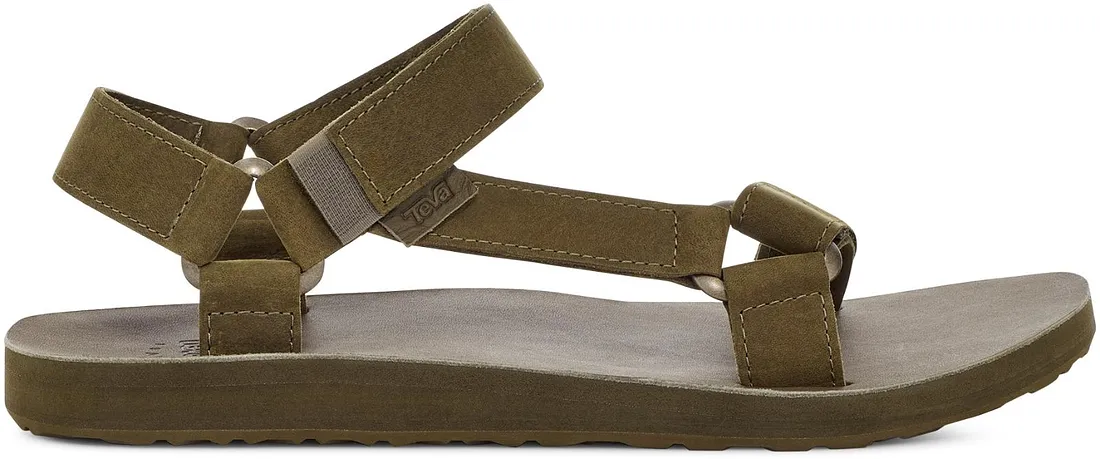
| Adjustability |
7
|
| Comfort |
8
|
| Traction |
9
|
| Weight |
6
|
Reasons to Buy
- Stylish and versatile design
- Courageous traction on most surfaces
- Comfortable and easy to adjust
- Durable material and construction
Reasons to Avoid
- May take a bit to break in
- Not the best for wet condition hiking
The Teva Original Universal is no doubt a classic when it comes to hiking sandals. Its vintage vibe stands the test of time, offering a nod to the brand's rich heritage whilst incorporating modern outdoor shoe technology.
Weighing the average pair at about 1.3 lbs, the Original Universal is light as a feather while offering solid support and comfort due to its EVA foam footbed. It has got adjustable straps made from recycled polyester webbing which not only provide a great fit but are also kind to the environment. Plus, there's a Universal Strapping System because we all know that one size does not fit all.
Keen walkers appreciate the fact that it includes a cushioned shoc pad in the heel. This tech absorbs impact like a pro, reducing stress on the lower extremities during those particularly challenging hikes. Its rubberized outsole, sporting a distinct pattern offers a good amount of traction, allowing you to feel secure, whether you're traversing dry terrain or splashing through shallow streams.
One aspect that Teva wearers rave about is the fast-drying nature of the sandals - thanks to the polyester webbing. This feature can be a real game-changer, especially when you want to transition quickly from a water activity to a hike. Furthermore, they are incredibly durable, so they could virtually last for many hiking seasons.
Despite the many positives, it's worth noting that the Teva Original Universal is not ideal for everyone. Some users have mentioned certain issues such as the sandals taking a bit of time to break in, occasional blisters caused by the straps, or discomfort when wearing them for prolonged periods. Also, some users have reported a squeaky sound after they've been exposed to water.
However, considering the exceptionally reasonable price tag and the brand's commitment to the environment, these sandals still come out as a top choice for many. So, whether you're planning a hiking trip, going for a kayak ride, or simply need a reliable pair of footwear for your summer adventures, the Teva Original Universal is worth checking out.
Prices
Xero Shoes Z-Trail EV
$79.95Best Hiking Sandals for Minimalist and Barefoot Hiking
Based on our research and testing, we think the Xero Shoes Z-Trail EV are a solid choice if you want hiking sandals that's really well suited to Minimalist and Barefoot Hiking.
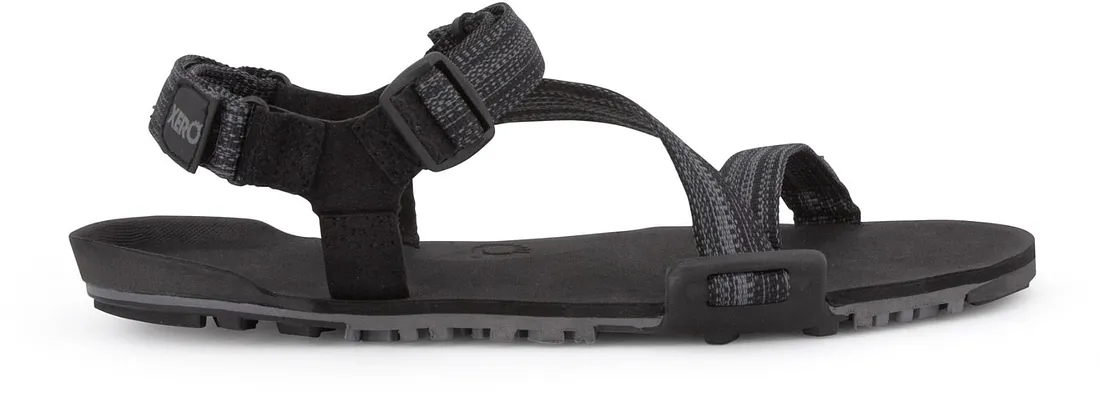
| Adjustability |
9
|
| Comfort |
8
|
| Traction |
7
|
| Weight |
6
|
Reasons to Buy
- Breathable and quick-drying
- Flexible feel mimics barefoot walking
- Top-tier trail traction
- Durable and long-lasting construction
- Adjustable straps for a personalized fit
Reasons to Avoid
- May take time to adjust to barefoot style
- Less support than conventional hiking sandals
Xero Shoes Z-Trail EV stakes its reputation as the ultimate go-to for hikers seeking a minimalist, pared-down experience. Without compromising on protection and comfort, the sandals offer the feel of going barefoot, making you will feel every stone and twig under your foot - but without compromising on safety or comfort. That said, it's not a sandal for everyone. If you aren't keen on a 'close to nature' feel, you might want to look for a shoe with more padding.
The Z-Trail EV is light as a feather, hardly noticeable in your travel pack. This makes it an excellent choice for hikers craving that 'no shoes' experience, as well as those who need a backup pair without adding any significant weight to their packs. The sandals check in at around 5.4 ounces per sandal, which is roughly 20% lighter than traditional sports sandals.
Customer reviews praise the flexibility and 'three-layer FeelLite' sole with TrailFoam, which adds benefit to your every step and rolls up easily for storage. They're known to offer a good grip, even on slippery trails, thanks to the FeelTrue rubber treads on the outsole. That said, the footprint is broader and could feel cumbersome for people with narrow feet.
User reviews suggest that the adjustable heel and instep straps make for a customizable fit, though a minority of folks had issues with them loosening over time. The sandals do offer good arch support, crucial for long hiking trips. The comfort factor is basically subjective, with some users loving the barefoot feel and others finding the lack of cushioning uncomfortable.
Durability is another strong point for the Z-Trail EV according to customers - the webbing, in particular, holds up well over time, proving resistant to fraying and tears. However, there's mixed feedback about the lifespan of the sole. A few users mentioned that the soles wore out quicker than they expected, while many others were satisfied with the longevity.
Lastly, the Xero Shoes Z-Trail EV is vegan-friendly, an important factor for the environmentally conscious hiker. As for the price point, it comes in respectable for the value it delivers. A touch pricey, perhaps, when compared to other sandals on the market, but not without warrant given its unique offering.
Related Posts
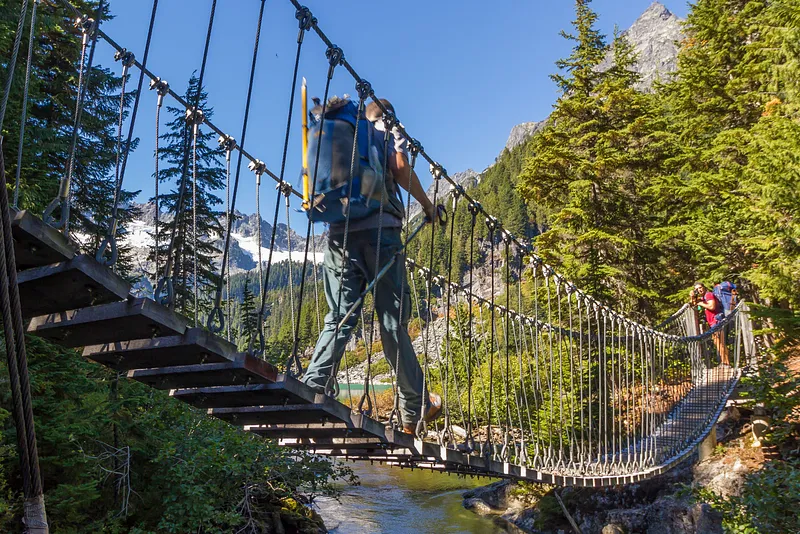
A good pair of hiking boots will be your feet's best friend. They're probably the one piece of hiking gear that you really do need to go out and buy when you start hiking. But, a good pair will...
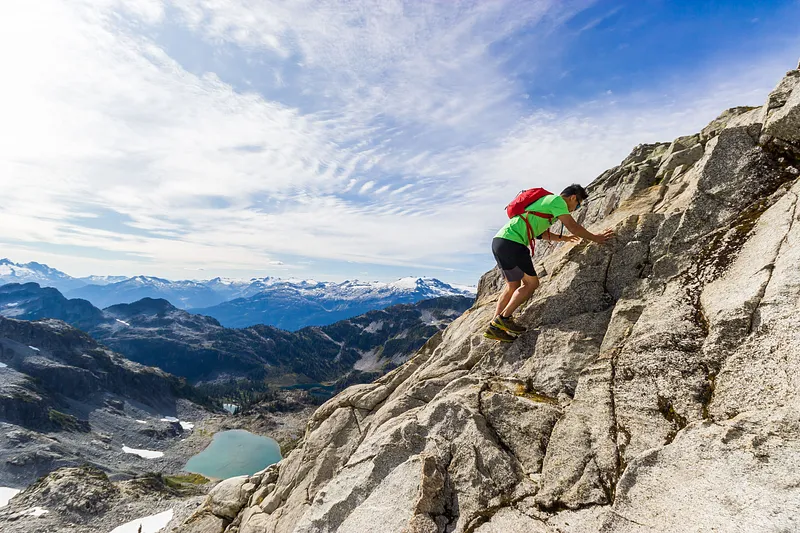
Hiking shoes are a great option if you're looking for something a little lighter, more breathable and more nimble than the typical hiking boots.
We've scrambled up chimneys and boulder fields,...
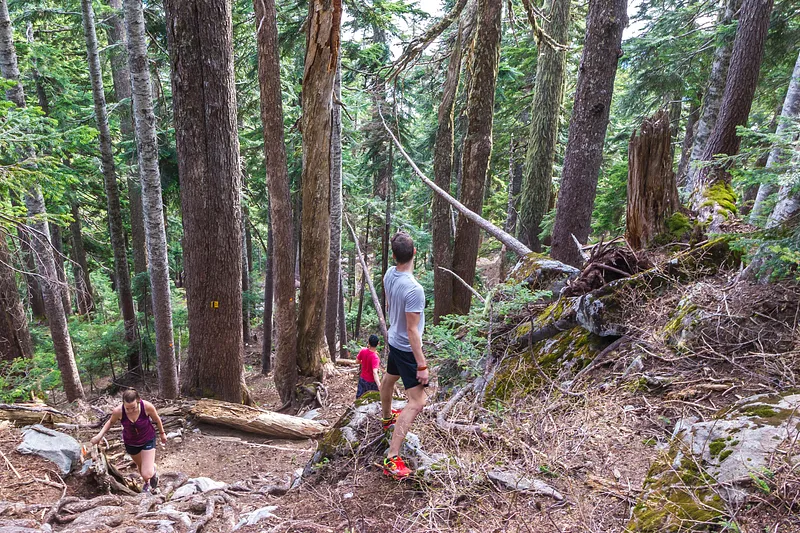
Hiking socks are one of those underappreciated pieces of gear that you don't think about until something starts going wrong. The right pair can keep your feet dry and comfortable, and the wrong...

For hiking in any season, a solid pair of hiking pants is something that every camper, hiker and backpacker should have in their closet.
We've done a whole lot of trekking around in the forest, up...

For those hot summer days, or even for those not so hot days when you want to move fast, a good pair of hiking shorts is something you should absolutely have in your closet.
We've trekked through...
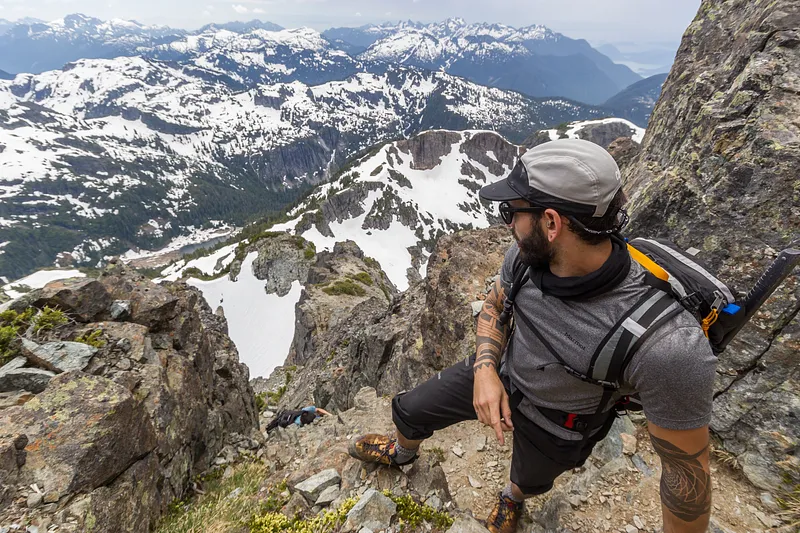
Many people will just wear whatever shirt they find in the closet when they go hiking, but a good, purpose built hiking shirt really does, we think, make a difference in your enjoyment of the great...
